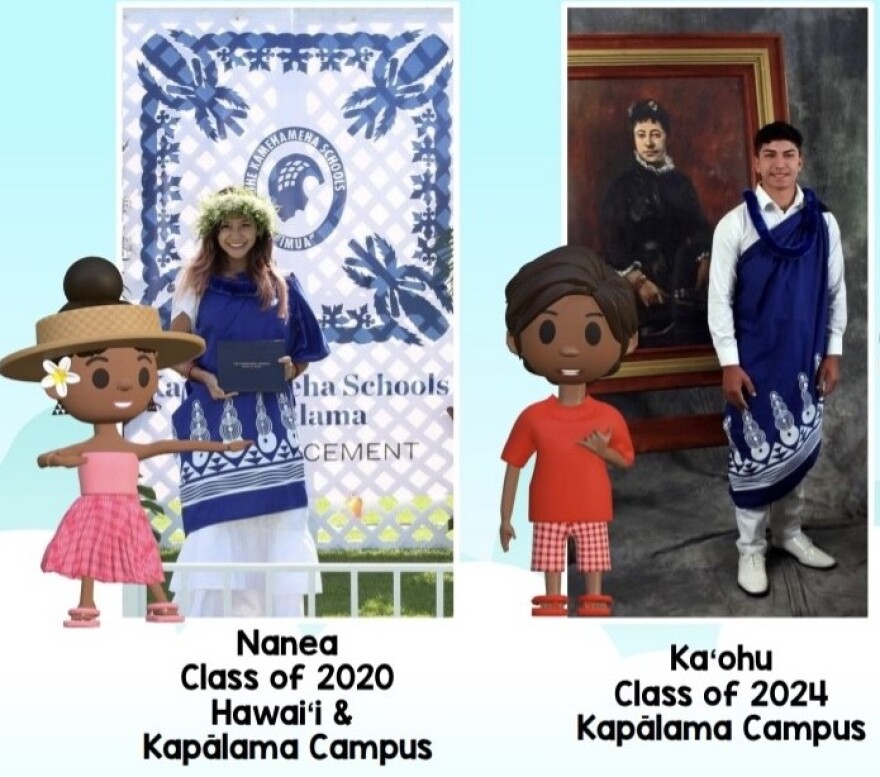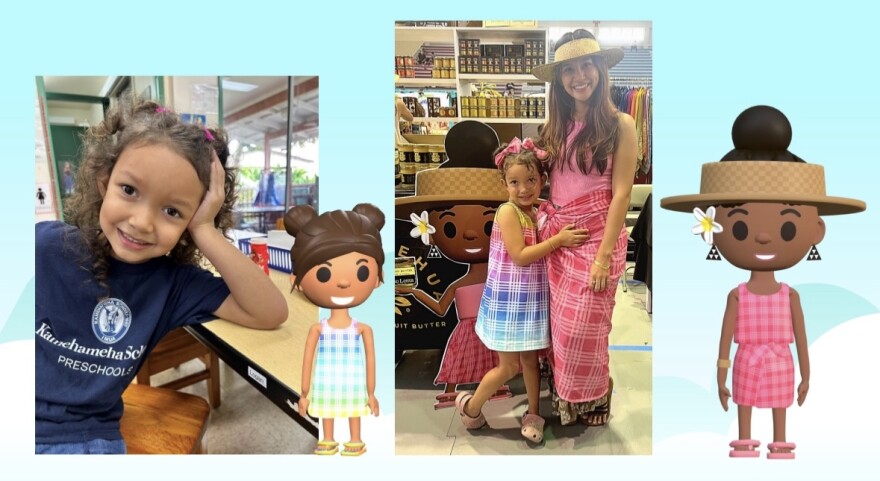A locally-made 3D animation YouTube channel is promoting ʻŌlelo Hawaiʻi educational videos to connect keiki and their ʻohana beyond the pae ʻāina.
Nanea TV stands out as the only one on the platform to combine the Hawaiian language with 3D animation.
It officially launched in 2023 after creator Susie Canda spent about three years learning how to animate.

Canda, from Puna Hawaiʻi, is a mother and grandmother who has a background in web development. And prior to Nanea TV, she had always wanted to learn the skill.
“When my oldest granddaughter was born, which is who inspired everything, we started watching more videos and I tried to look for things that are in 3D animation,” Canda said. “We were watching ‘Pocoyo’ and that’s when I was like I really should create something for her.”
“I decided to do it because I wanted her to learn Hawaiian and I wanted her to see local things,” she said. “I was going to create something that she could watch and that all kids or whoever can watch, but the main thing was for my grandchildren to be able to watch something that represents where they live and then once I posted it, my daughter posted it, and she went viral.”
Canda enlisted the help of her friend Kumu Eleena Helenihi to be the primary voice of the channel and to come up with the concepts and lessons.

Canda told HPR that the first time she heard Helenihi sing, she knew she would be perfect.
“She made what I do amazing and it wouldn't have worked if her voice wasn't on there,” Canda said.
Helenihi has a background working with keiki as an educator and kumu hula on Oʻahu. She said that when she received the call to join Canda, it just felt natural.

“I was already living and doing, so it was just something I could naturally incorporate in my day-to-day,” Helenihi said. “These were things I was comfortable sharing and what I was either already teaching or wanting to teach my kids.”
“I’m grabbing a ʻukulele in the classroom, but I never had visuals to show my kids, and so when this came to, I was able to show my kids and it's so nice,” she explained. “I incorporate Hawaiian studies time, so I’m able to use the videos in my classroom and they love it.”
Characters on Nanea TV also include Canda’s niece, Nanea, who sings in the intro and is the main character of the channel, and Helenihi’s son, Kaʻohu, who performs hula demonstrations on the channel and for Canda to use for animation.
Produced by and for the people of Hawaiʻi, no matter where they live
A 2020 Pew Research study found that 80% of parents with a child age 11 or younger said their child watches videos on YouTube.
Canda said that before launching the first video, an article about a popular children’s show caused her to be conscious of her format and editing style.
Nanea TV offers keiki low-stimulation content with as few as three frame/scene changes per minute. Other children's shows are as high as 39 frame/scene changes per minute.

The channel has over 10,700 subscribers and has received almost 1.5 million views. Canda said that reaching displaced kānaka has become a focus for her after reading how happy they were to share it with their keiki.
“Some of them don't know the language, so they were able to put that right on and feel like they're getting some part of their culture or language and so that became my goal,” she said.
The channel’s 36 videos each contain a different song, lesson, or traditional Hawaiian chant.
“Ke Kino” teaches keiki the names of body parts in Hawaiian, and “E Ala Ē” is an oli about the awakening of the sun. Viewers can also find videos about prominent Hawaiian aliʻi and Hawaiian history.
Canda said that a typical video takes her up to a month and a half to animate — if she doesn’t sleep much.
Viewers may notice specific details like Spam musubi and lau lau on dinner plates, Mr. Manapua man selling Hawaiian snacks, the Edith Kanakaʻole Multi-Purpose Stadium, and Native Hawaiian plants and flowers.
Canda shared that animating specific elements, such as the ʻōhiʻa lehua, took her about 10 hours to make, and the ʻIolani Palace took around five months.
“I wanted the keiki to be able to come home and I wanted everything to feel familiar with them,” she said. “That was the goal, so I spent hours doing it and I love it. And those details matter to me.”
The channel's most recent video tells the story about Queen Kapiʻolani’s legacy and her dedication to public health, cultural preservation and the Hawaiian people. Canda said she spends time researching Hawaiian history to make sure they get the information right.

In addition to videos, Nanea TV offers over 100 free downloads of Nanea TV printables for keiki.
Canda hopes to continue making more content and to one day have a Nanea TV movie. She also wants more creators to put out visual content for keiki and ʻohana. She added that reading positive comments from viewers and seeing videos of keiki enjoying Nanea TV makes her day.
Helenihi said that sharing ʻŌlelo Hawaiʻi on YouTube has been super rewarding.
“I've worked with keiki for such a long time trying to instill the Hawaiian culture, Hawaiian language. It's something I've always felt led to do,” she said. “Being able to do it on a platform where people all over the world can access it, to be able to take it outside of the classroom, is rewarding. Being able to help spread awareness to our culture and language is a neat thing to be able to do.”
Hawaiʻi Public Radio exists to serve all of Hawai’i, and it’s the people of Hawai’i who keep us independent and strong. Help keep us strong to serve you in the future. Donate today.






